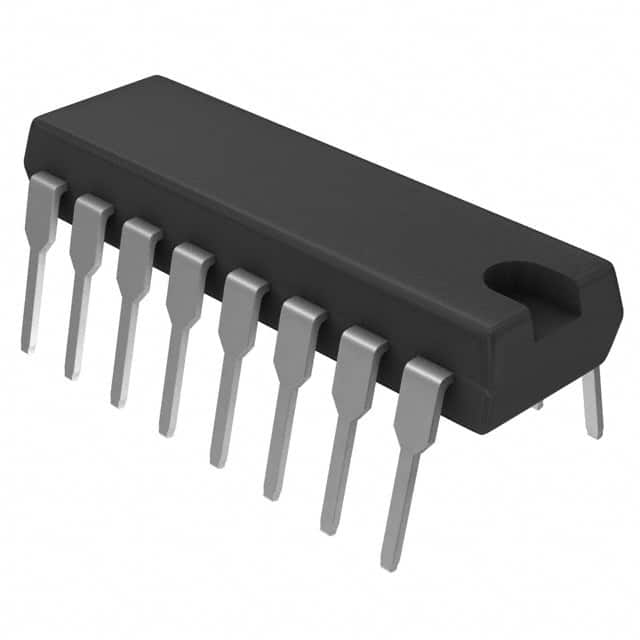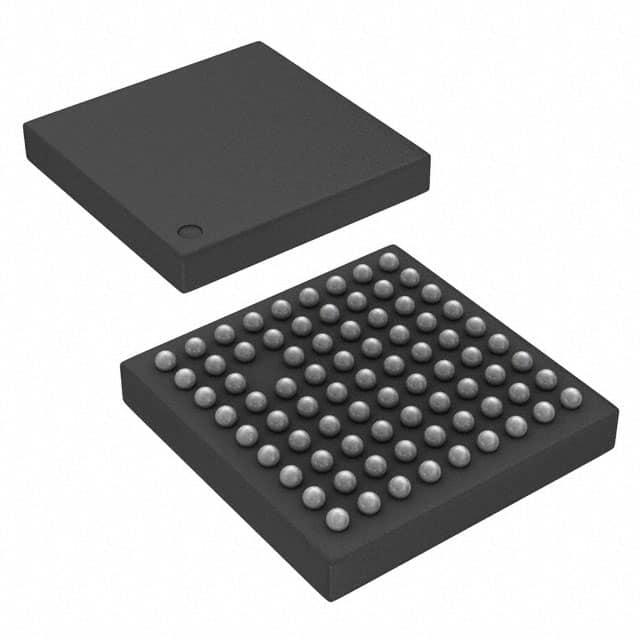CODECs, short for "Coder-Decoder" or "Compression-Decompression," are essential components in digital communication and multimedia systems. They are responsible for encoding (compressing) and decoding (decompressing) various types of data, such as audio, video, images, and more, into a format that can be efficiently transmitted, stored, and played back.

The purpose of a CODEC is to reduce the size of data for transmission or storage while maintaining an acceptable level of quality. By employing different algorithms and techniques, CODECs can remove redundant or unnecessary information from the original data, resulting in a more compact representation. When the compressed data is received or accessed, the decoder reverses the process and reconstructs the original data.
Ⅰ. The types of CODECs
Ⅱ. Physical Characteristics of Interface - CODECs
Ⅲ. Electrical Characteristics of Interface - CODECs
The types of CODECs
There are several types of CODECs, each tailored for specific types of data:
1.Audio CODECs: These CODECs are used for compressing and decompressing audio signals. Examples include MP3, AAC, WMA, and Opus. Audio CODECs aim to minimize file size while maintaining high-quality audio reproduction.
2.Video CODECs: Video CODECs are designed to encode and decode video data. Popular video CODECs include H.264 (AVC), H.265 (HEVC), VP9, and AV1. Video CODECs employ various compression techniques, such as motion compensation, quantization, and entropy encoding, to reduce video file sizes without significant loss of visual quality.
3.Image CODECs: Image CODECs are used to compress and decompress image data. JPEG, PNG, GIF, and WebP are examples of widely used image CODECs. These CODECs use techniques like discrete cosine transform (DCT), quantization, and entropy coding to reduce image file sizes.
4.Speech CODECs: Speech CODECs are specifically designed for compressing and decompressing speech signals. Examples include G.711, G.729, and Opus. Speech CODECs prioritize efficient transmission and storage of speech data while maintaining intelligibility.
5.Text CODECs: Text CODECs are used for compressing and decompressing textual data. Although text is already compact, text CODECs like LZ77, LZ78, and LZW can further reduce its size for efficient storage and transmission.
CODECs play a vital role in digital communication, streaming services, video conferencing, multimedia applications, and more. They enable efficient utilization of bandwidth and storage resources while ensuring an acceptable level of quality for the end-user.
Physical Characteristics of Interface - CODECs
When discussing the physical characteristics of an interface for CODECs, we typically refer to the hardware or physical connections involved in the transmission or processing of encoded or decoded data. These physical characteristics can vary depending on the specific application or system requirements. Here are some common physical aspects of interface - CODECs:
1.Connectors: Interfaces often utilize connectors to establish a physical connection between the CODEC and other devices or systems. These connectors can include standard interfaces such as USB (Universal Serial Bus), HDMI (High-Definition Multimedia Interface), DisplayPort, Ethernet, or specialized connectors specific to audio or video signals, like XLR (microphone) or RCA (audio/video).
2.Cables: Physical connections between CODECs and other devices are typically made using cables. The choice of cables depends on the interface and the requirements of the system. For example, audio interfaces may use XLR, TRS (Tip-Ring-Sleeve), or optical cables, while video interfaces may require HDMI, DisplayPort, or coaxial cables. The cables used can vary in length, shielding, and connector type to ensure reliable data transfer.
3.Input/Output Ports: CODECs often feature specific input and output ports to facilitate the connection of audio, video, or data sources. These ports can include analog inputs/outputs, digital inputs/outputs (such as SPDIF or AES/EBU), or specialized ports for specific purposes (e.g., microphone inputs, headphone outputs, line-level inputs/outputs).
4.Form Factor: The physical form factor of a CODEC interface can vary depending on the application. It may be a standalone device designed for rack-mounting or desktop use, an expansion card that fits into a computer's PCIe slot, a USB dongle, or an integrated component within a larger system or device.
5.Power Supply: CODECs require power to operate, and therefore, physical interfaces often include provisions for power input. This can involve AC power adapters, DC power connectors, or even power-over-data solutions such as Power over Ethernet (PoE) for network-connected devices.
It's important to note that while the physical characteristics of an interface facilitate the connection and transmission of data between CODECs and other components, the actual encoding and decoding processes are typically handled by the software or firmware running on the CODEC itself.

Electrical Characteristics of Interface - CODECs
The electrical characteristics of an interface for CODECs primarily pertain to the electrical signals and parameters involved in the transmission and processing of data. These characteristics ensure proper signal integrity, compatibility, and reliable communication between the CODEC and other devices or systems. Here are some common electrical aspects of interface - CODECs:
1.Voltage Levels: CODEC interfaces operate with specific voltage levels for signal transmission. These voltage levels can be analog or digital, depending on the interface type. For example, analog audio interfaces often operate with line-level voltages (e.g., +4 dBu or -10 dBV), while digital interfaces like SPDIF or AES/EBU operate with defined voltage levels (e.g., 5V TTL or 3.3V CMOS) for transmitting digital audio data.
2.Impedance: Impedance matching is crucial for maintaining signal integrity and minimizing signal reflections. CODEC interfaces typically define specific impedance requirements for input and output connections. For example, audio interfaces commonly specify input and output impedance values (e.g., 600 ohms or 10 kilohms) to ensure proper matching with connected devices or cables.
3.Bit Rate and Data Rate: Digital interfaces for CODECs operate at specific bit rates or data rates, indicating the number of bits transmitted per unit of time. These rates are usually defined by the interface standard and can vary depending on the specific CODEC and application. For example, USB audio interfaces may operate at different data rates, such as 44.1 kHz, 48 kHz, or higher, depending on the audio quality requirements.
4.Clocking: CODEC interfaces often rely on clock signals to synchronize the transmission and reception of data. The clock signal ensures that the sender and receiver are operating at the same rate, enabling proper data sampling and accurate reconstruction of the original signal. CODECs may require a specific clock source or use clock recovery techniques to extract timing information from the incoming data stream.
5.Noise and Grounding: CODEC interfaces need to address electrical noise and grounding considerations to ensure reliable data transmission and minimize signal interference. Proper grounding techniques, such as star grounding or separate analog and digital ground planes, may be employed to reduce noise and prevent ground loops that can introduce unwanted artifacts or distortions in the audio or video signals.
These electrical characteristics are essential to ensure accurate data transmission and maintain signal integrity throughout the interface - CODEC communication. Adhering to the specified electrical parameters helps ensure compatibility between different devices, minimize signal degradation, and achieve reliable and high-quality audio or video reproduction.



